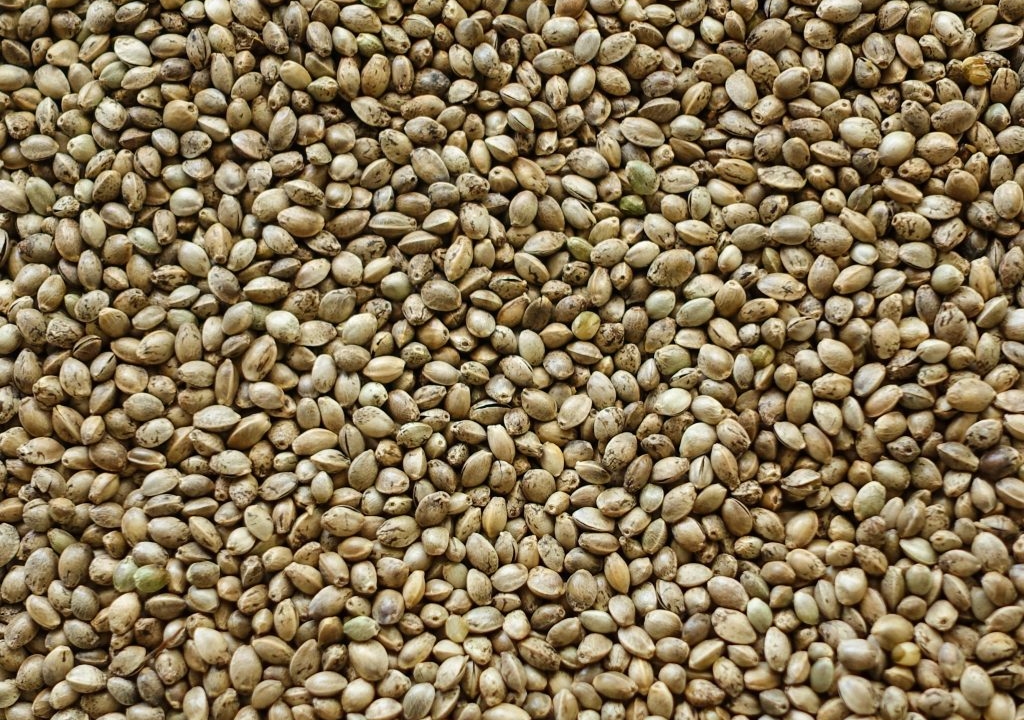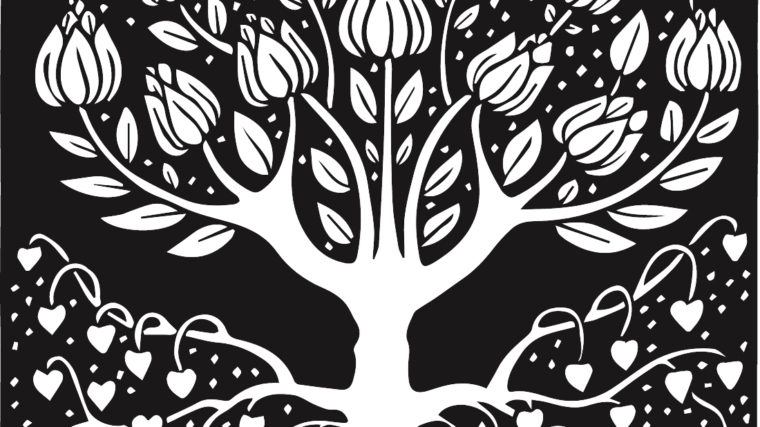Blue Cliff Record, Case 12
A monk asked Tung-shan, “What is Buddha?”
Tung-shan said, “Three pounds of hemp.”
Reflections
So what do you make of this koan? What the hell are they talking about? It sounds like a game. “What is Buddha?” Everybody knows. It’s like asking, “What is rain?” And then the answer, “Three pounds of hemp.”
What nonsense!
Various commentators have made exotic explications on this koan. Shibayama Roshi, Aitkin Roshi, Yamada Roshi, to name a few of the most recent ones. Generally, they suggest that the monk’s question is in code. What he really means is something like:
“What have you attained in your realization experience?”
Or, the question could be,
“What is attained in a realization experience?”
Or,
“What would I receive in my realization experience?”
“In what way would I change? How would I be different?”
And so on.
And Tung-shan’s response is, “Three pounds of hemp.”
Aitken Roshi suggests the question could mean,
“What is the essential aspect of life in this world?”
“What is the substance of life or death?”
“Can you show it to me?”
“Concretely?”
So we’re not talking about Buddha we’re talking about enlightenment—the realization experience—we’re talking about the very nub of life itself. This is what the monk is really asking. So why doesn’t he just say so? Why does he hide the question under Buddhas robes? One of the things I love about the old Zen masters, as revealed in their dialogues that developed into koans, is their playfulness. They seem to have virya or great determination in their practice, but they do not lose their sense of play. They shower their exchanges with humor. But usually, the humor has a sharp edge or a sharp point which pierces into your heart or mind. I think that’s one of the reasons we find koans so engaging, even though so frustrating, and sometimes, so painful.
Aitkin Roshi suggests that in those days there were so many students, that access to the teacher was limited. And so two or three times a week the teacher would mount the rostrum, or high seat to make a brief teisho or dharma talk and open-up the session to Hosen, or dharma combat. Or open daisan. Then monks would individually come forward, ask their questions, and in this way receive instruction. Our hemp koan could have come about in this setting. Tung-shan needn’t have been in the sewing room weighing cloth for robes. For instance, if you came up to me during a break I was taking from mowing the lawn and asked me, “What is the Buddha?” and I respond “A patch of unmowed grass.” You would know what I meant. And you may even know exactly what my answer meant in response to your question. So, what did I mean?
And Tung-shan may have been weighing three pounds of hemp, and his response became koan history. In “Tenzo Kyokun” Dogen says ,“ The incident of Dongshan’s three pounds of sesame seed took place when he was a tenzo.” I don’t know the source of Dogen’s quote, and his is the only reference I have found in koan literature that places Tung-shan in the kitchen weighing sesame seeds.
There is a similar situation in Chao-chou’s equally famous response, “The oak tree in the courtyard” in case thirty-seven of the Wumenkuan.
A monk asked Chao-chou, “What is the meaning of Bodhidharma’s coming from the West?”
Chao-chou said, “The oak tree in the courtyard.”
Many believe that like Tung-shan, Chao-chou happened to be looking out in the garden when he was asked the question and his response has reverberated ever since.
So let’s look at this question and answer again.
I read as much as I can about the background of the individuals in koans. But I give precedence to the text. And only with trepidation would I allow text to be informed by anything that is outside of the text. For instance, you may be working with the Wumenkuan. Often Mumon’s verses and commentary go right to the heart of the koans. But his comments are not the koan. The koan itself is what I’m interested in and I’m interested in your understanding of the text of the koan.
So what are the words of the text of our koan?
A monks asks Tung-shan “What is the Buddha?’
Tung-shan said “Three pounds of hemp.”
One of the interesting things about this exchange is that it is found very often in one form or another during the T’ang era of koan literature. There are many examples of this particular type of question. For instance, the same case, with almost the same text appears in the Wumenkuan as Case eighteen. Here the word, “flax” is used instead of “hemp.”
It is in Case eighteen, that we find the wonderful metaphor of, “Clam Zen” in Mumon’s commentary. He says,
Old Man Tung-shan attained something of clam-Zen. He opened the two halves of his shell a bit and exposed his liver and intestines. Be that as it may tell me: where do you see Tung-shan?
And Case twenty-one of the Wumenkuan is a similar and famous case which goes like this:
A monk asked Yun-men, “What is Buddha”
Yun-men said, “Dried shitstick.”
Now let’s look a little at the biography. Our Tung-shan was a student of Wu-man. And he also appears in the Wumenkuan, in Case Number fifteen. The koan goes like this:
Tung-shan came to see Yun-men. Yun-men asked him, “Where were you most recently?”
Tung-shan said, “At Ch’a-tu.”
Yun-men said, “Where were you during the summer?”
Tung-shan said, “At Pao-tzu Monastery in Hu-nan.”
Yun-men said, “When did you leave there?”
Tung-shan said, “August 25th.”
Yun-men said, “I spare you sixty blows.”
Next day, Tung-shan came again and said, “Yesterday you said you spared me sixty blows. I don’t know where I was at fault.”
Yun-men said, “You rice bag! Do you go about in such a way, now west of the river, now south of the lake!”
With this, Tung-shan had great satori.
So, at last, back to the text.
First we have the three words. “What is Buddha?” That the question is phrased in the present tense is significant. We are talking about a living, present, reality. Something here, now, immediate, close, intimate.
The first word is, “What.” What is the Buddha? It is not, Who is the Buddha? Or, How or, Why or, Where. Each of these words would be a different question. It is, What is the Buddha? So, to paraphrase President Clinton, what does, what mean? Let’s turn to the OED. Basically, it says there are various possible arrangements of the uses of this word. And after going through many gyrations of exotic meanings, it equates the word and meaning of whatwith the word who.
So the question can be rephrased, “Who is the Buddha? Or, “What is the nature, character, or function of the Buddha?”
I think we can dismiss the first, “Who is the Buddha?” if we are speaking historically. If not then we’re in trouble. The second usage of the word “what,” to describe the nature, character and function of the Buddha, is more interesting.
However, we have yet another problem that is implicit in the very nature of language. There are basically two levels of words. There are high-level abstract words and low-level abstract words. Low-level abstract words have referents, i.e., when I say the word, “table” I can point at something and you know what I’m talking about. When I say the word, “dog” you know what I’m talking about. When I say the words, “chair,” “zafu,” “zabuton,” incense,” you know what I’m talking about. The same applies to persons. When I say the word, “Margaret,” and point, you know who I’m talking about. These are low-level abstract words. Now there are high-level abstract words. When I say the word, “philosophy” what do I point to? When I say the word, “science,” what do I point to? The words, “faith,” “idea,” mind,” “emptiness,” etc.
There is also the further complication of metaphor—when we use a word on one level to point to another word at another level. For instance the word, “cloud” in Zen usage, points to the word, “monk.” The word, “moon” points to the word, “enlightenment.” Then in Buddhism there is the further complication of the relative and absolute. Dogen is constantly using low level abstract words in the relative to point to high-level abstract words in the absolute. That’s why our eyes often spin when we read Dogen.
Such is the case with the words, “Buddha” and “hemp” in this koan.
I think the monk is not using the low-level abstract sense of the word “Buddha.” He is using the high-level abstract sense and the second meaning of the word “what,”—something which refers to the nature, character, or function of the Buddha. So his question could be, “What is the nature, character, and function of Buddha?”
Tung-shan says, “Three pounds of hemp.”
Each word is specific. Each word on a low-level of abstraction. “Three.” “Pounds.” “Hemp.” Yet two of the words—”three” and “hemp”—are metaphors which point to the absolute.
What can Tung-shan mean by the first word of his response, “three?”
Informed by the word, “Buddha,” one of the meanings that come to mind is the Trikaya, which is The Dharmakaya, Sambhogakaya, and the Nirmanakaya. The Dharmakaya is the body of the law, or Dharma, the void, or emptiness, the inexpressible. The Sambhogakaya is the body of Bliss; the body that sometimes inhabits bodhisattvas and buddhas, in this world, at this time, as well as in other worlds, at all times. These are the saints, the guardian angels. And the Nirmanakaya is the body of transformation. Where word becomes flesh. Where the Dharmakaya enters into the historical reality and person of Siddhartha, who becomes Shakyamuni Buddha. All of this may be suggested by the simple low-level abstract word, “three.”
I would take the word, “pounds” to be and remain a low-level abstract word.
But with, “hemp” we have something different. “Hemp” is what is used to make cloth, particularly the cloth that the monks use to make their robes, their rakusus, and their kesas. The Buddha Robe. The Buddha Kesa which itself is the Dharma. Is the Buddha. And this takes us back to, “three” and to the Three Treasures. The Buddha, Dharma, and Sangha.
Three pounds of hemp becomes the Buddha as experienced in the Trikaya, and the ritual of the Ti Sharana, the ritual of commitment, taken daily by monks, to the Three Treasures.
Buddham Sharanam Gacchami.
Dhammam Sharanam Gacchami.
Sangham Sharanam Gacchami.
I take refuge in the Buddha.
I take refuge in the Dharma.
I take refuge in the Sangha.
Three pounds of hemp becomes the commitment of a life of service made by those who wear the rakusu or kesa. Three pounds of hemp becomes the commitment to the life and way of the Bodhisattva—the way of life dedicated to the love and service of all sentient beings, without exception. All of this may be suggested by the word, “hemp.”
So, having counted the sands of the koan, have I said it all? No! I’ve just begun. Now I can begin to work on the koan by letting the koan work on me and let it enter into my heart and feel where and what the Buddha is.
Now I can open myself, like Mumon’s clam, and expose part of my liver, my intestines, my lungs, and my heart, so that the koan can penetrate into the deepest places.
I can become the koan.
The koan can become me.
I can become the three pounds of hemp.
Become the kesa.
Become the Trikaya.
Become the Three Treasures.
Become the Buddha.
Discover all the realities within me.
And then, opening like a clam, I can present the koan in daisan.
***
A monk asked Tung-shan, “What is Buddha?”
Tung-shan said, “Three pounds of hemp.”



